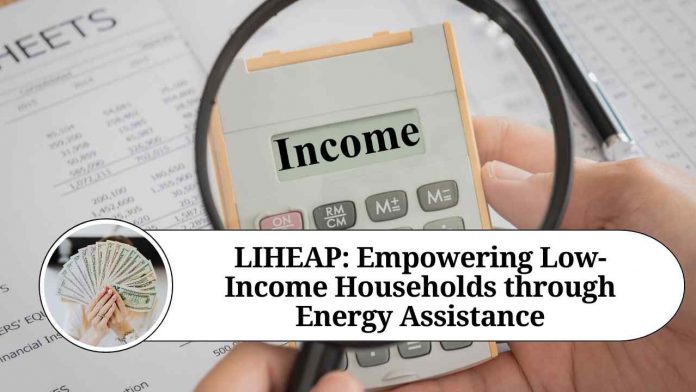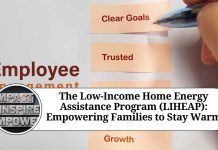Introduction
In a world where energy plays a vital role in our daily lives, it’s essential to ensure that every individual has access to reliable and affordable energy sources. However, for low-income households, meeting energy needs can often be a significant financial burden. To address this issue and provide assistance to those in need, the Low Income Home Energy Assistance Program (LIHEAP) steps in as a crucial lifeline. This blog post aims to shed light on LIHEAP and its invaluable contributions to empowering low-income families.
Understanding LIHEAP:
LIHEAP is a federally funded assistance program that operates in the United States, helping eligible low-income households with their home energy costs. The program provides financial assistance to individuals and families struggling to afford their energy bills, preventing utility service disconnections and ensuring safe and healthy living conditions.
Program Benefits:
- Financial Assistance: LIHEAP offers financial aid to qualifying households, alleviating the burden of high energy costs. The assistance provided can be used for various energy-related expenses, including heating, cooling, and home weatherization. By doing so, LIHEAP helps ensure that vulnerable families can maintain comfortable living environments without sacrificing their other essential needs.
- Crisis Intervention: LIHEAP also offers crisis assistance, providing immediate support to households facing energy emergencies. This component of the program prevents utility service disconnections during critical times, such as extreme weather conditions or financial hardships. By safeguarding families from the loss of essential utilities, LIHEAP plays a vital role in maintaining their well-being and security.
- Weatherization Services: In addition to financial assistance, LIHEAP promotes energy efficiency through weatherization programs. These initiatives aim to reduce energy consumption and lower utility costs in the long run. Weatherization services include insulation, sealing air leaks, and upgrading inefficient appliances. By implementing these measures, low-income households can experience substantial energy savings, making their homes more sustainable and affordable.
Program Eligibility:
To qualify for LIHEAP, individuals must meet certain income and household size criteria. Eligibility requirements may vary by state, so it is crucial to check the guidelines specific to one’s location. Typically, applicants need to provide documentation regarding income, residence, and energy bills to determine their eligibility and benefit level.
Community Impact:
LIHEAP has a profound impact on the lives of low-income individuals and families, improving their overall quality of life. By reducing energy burdens, the program enables households to allocate their limited resources towards other essential needs like food, healthcare, and education. LIHEAP’s assistance also reduces the risk of homelessness and ensures that vulnerable populations can maintain safe and comfortable living conditions.
Conclusion
In an era marked by rising energy costs and socioeconomic disparities, LIHEAP stands as a beacon of hope for low-income households. By providing essential financial aid, crisis intervention, and energy efficiency measures, the program empowers individuals and families, offering a path towards stability and a brighter future. However, it is crucial to recognize the ongoing need for funding and support to ensure LIHEAP’s continued success in helping those most in need. Together, we can work towards a more inclusive society where everyone has access to affordable energy and the opportunity to thrive.
Read more useful content:
Frequently Asked Questions (FAQs)
Q. What is LIHEAP?
LIHEAP stands for Low Income Home Energy Assistance Program. It is a federally funded program in the United States that provides financial assistance to eligible low-income households to help them with their home energy costs. The program aims to prevent utility service disconnections, ensure safe living conditions, and promote energy efficiency.
Q. Who is eligible for LIHEAP?
Eligibility for LIHEAP is based on income and household size. The specific income thresholds and requirements may vary by state, so it’s essential to check the guidelines for your particular location. Typically, households with income at or below 150% of the federal poverty level are eligible for LIHEAP assistance.
Q. What types of energy costs does LIHEAP cover?
LIHEAP provides assistance for various energy-related expenses, including heating, cooling, and home weatherization. The program helps low-income households pay for electricity, natural gas, oil, propane, wood, and other heating sources. Additionally, LIHEAP may offer weatherization services to make homes more energy-efficient and reduce long-term energy costs.
Q. How does LIHEAP provide financial assistance?
LIHEAP offers financial assistance in two main ways: regular assistance and crisis assistance. Regular assistance provides help with energy bills on a recurring basis, typically during the colder months. Crisis assistance is for households facing immediate energy-related emergencies, such as a utility service disconnection or lack of heating or cooling during extreme weather conditions.
Q. How can I apply for LIHEAP?
To apply for LIHEAP, you need to contact the LIHEAP office or the designated agency in your state or local community. They will provide you with the necessary application forms and guide you through the application process. You will likely need to provide documentation regarding income, residence, household size, and energy bills to determine your eligibility.
Q. Can I receive LIHEAP assistance if I live in public housing or receive other government assistance?
Yes, living in public housing or receiving other government assistance does not automatically disqualify you from receiving LIHEAP assistance. LIHEAP is designed to help low-income households, including those living in public housing or receiving other forms of government assistance. However, eligibility determination may vary, so it’s best to check with your local LIHEAP office for specific details.
Q. Does LIHEAP provide assistance year-round?
LIHEAP assistance is primarily provided during the colder months when heating costs tend to be higher. However, the availability of LIHEAP funds and the application periods may vary by state. Some states may also provide cooling assistance during the summer months for households with high cooling costs. It’s advisable to contact your local LIHEAP office to get accurate information regarding program availability in your area.
Q. Can I receive LIHEAP assistance if I rent my home?
Yes, LIHEAP provides assistance to both homeowners and renters. Whether you own or rent your home, as long as you meet the income and eligibility requirements, you can apply for LIHEAP assistance. However, the specific requirements and documentation may vary, so it’s important to consult your local LIHEAP office for detailed information.
Q. Is LIHEAP available nationwide?
Yes, LIHEAP is a nationwide program. However, the program is administered at the state level, which means that the specific guidelines, income thresholds, and application processes may differ from state to state. It’s crucial to contact your state or local LIHEAP office to obtain accurate information and apply for assistance.















